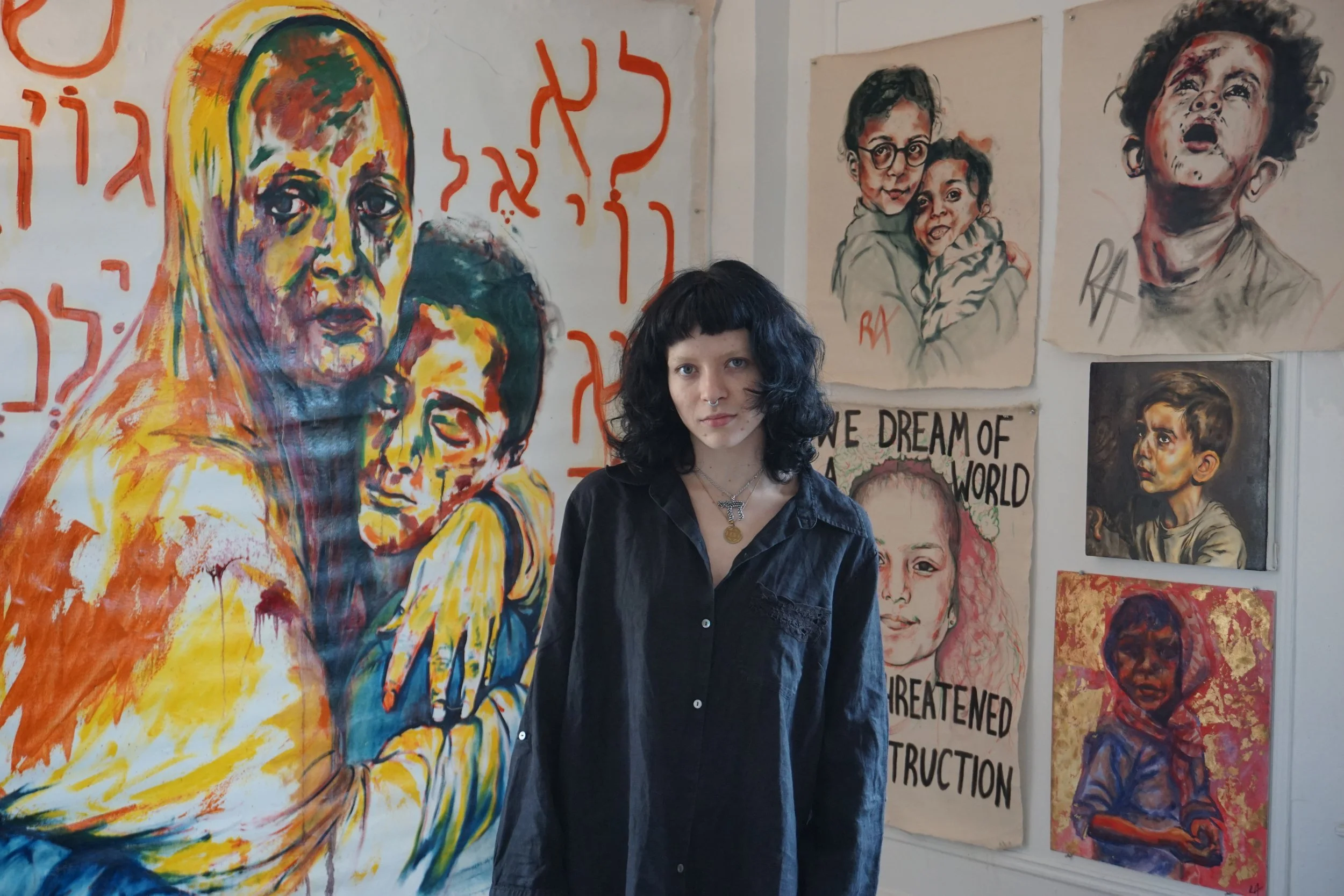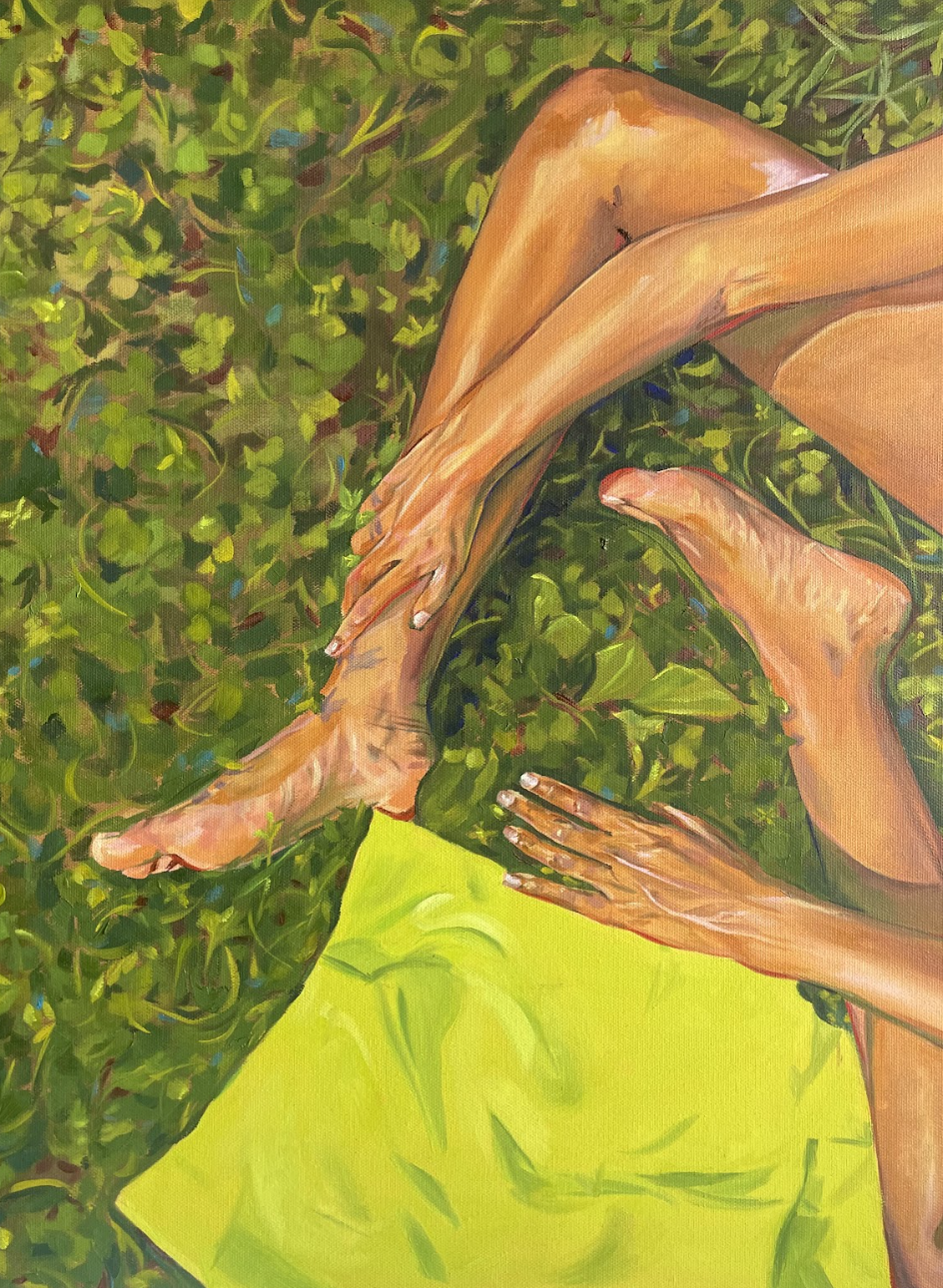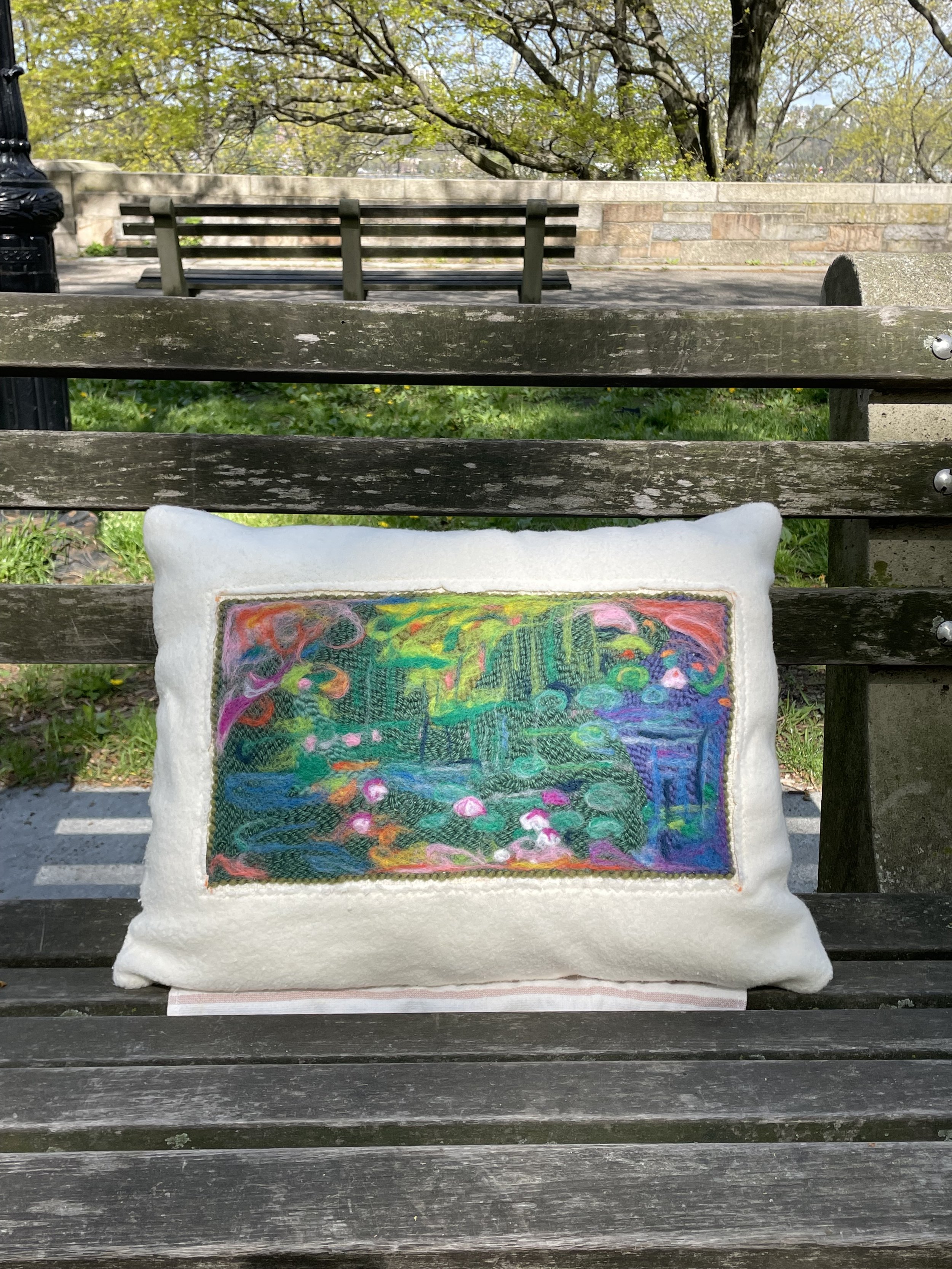Feature by Susana Crane Ruge
Photos by Will Park
Riley interlaces different mediums that give her the opportunity to explore her emotional depth and sensibility through thoughtful art and skillful craft. Riley prioritizes the physical experience of making art, which is reflected in her tendencies to make physical objects she can give out and wear down with use. She seems to excel in all mediums she explores with, consistently building a physical vocabulary for her expressionary needs. During our conversation, I picked up on her innate need for creating, her variety of inspirations, and the nostalgic sense of beauty comfort she expresses through her art.
“Please don’t quote me in a way that will make me sound silly” was one of the last things Riley Tavares said to me before leaving her dorm, and while laughing I thought that would be a difficult thing to do. Riley is a Senior at Columbia majoring in Archeology, on the cusp of graduating and pursuing her summer plans of excavating archaeological sites in Peru and Italy, then going into art conservation- a “problem- solvey” career plan that incorporates all of Riley’s loves and passions. During our conversation in her dorm- a second-floor suite room cozily decorated with some of her and her friends’ art, truly exhibiting the comfort and warmth of an artist and crafter- I got to see peaks of these said loves and passions, which I have taken the freedom to condense into themes of beauty, vulnerability, playfulness, and sentimentality.
We began exploring her artistic sensibilities by talking about Ratrock, and her deep love for this magazine. As its current co-president. Riley joined the magazine as a freshman during Covid, along with her (first!) friend and co-president Jaqueline. They have seen the magazine be reborn after the virtual dry spell of Zoom meetings, grow in number and in variety of artistic expression, and its increasing welcomeness towards various artistic mediums. She told me about her vision of Ratrock becoming a more prominent community on campus, and how she thinks that fostering the possibility for its participants to develop their individual art is key. She also told me about the effects Ratrock has had on her. It has oscillated her self-perception as an artist, sometimes feeling like her creative energy goes primarily to the club. Seeing her campus reality be so full of art, a beautiful slip one might fall into at Columbia, Riley mentioned how she felt like she is more unserious as an artist. I think she is. I can easily imagine both a younger and older Riley exploring with every medium available to her, experiencing colors, movement, and feelings while making art, all in an attempt to be free from imposed structures and rules, and to blur the lines between the body and the emotion, something that requires allowing unseriousness to creep in. It is this unseriousness that, in my eyes, makes her an authentic artist. Looking around her room and spotting her pieces on the walls, on her bed, her nightside table, her floor, I understood that she appreciates exploration and creation, meaning she has to diverge in mediums to bodily and emotionally experience creation in all its diversity and difference.
Riley is an artist in many and all senses, even though she might doubt defining herself as one. She has a need of bringing her emotions into a tangible reality through art and craft. When it comes to the division of those, Riley has two conflicting approaches. She knows, theoretically, that there is a difference between art and craft -“art with a capital A”- and that much of what she has begun doing falls into craft. But her experiences in crafting- punch needling, sewing, quilting- fulfill her expressionary needs of showing love, bringing physicality to her emotions, soft, tactile experiences, and altering space by creating it, all seem to point to what an artist does. On the other hand, there is a more humane approach to art that Riley has, it integrates the physical space where she makes art with interaction between her and people who she values, and I remember thinking that Riley’s art is about exactly that. More than a desire for representation, Riley has a desire for remembering, being remembered, and finding emotional closures and apertures to people who she appreciates and experiences she goes through. She thinks about the details of experiencing art. She buys baby fabric for her pillows since she appreciated the warmth and softness it provides, she gives her pillows away, wanting them to be worn down by constant love and use, she thinks about grass and being barefoot, about the body and the experience of life through her process of art making in a way that centers both the artist and the receiver-Riley’s art is valuable both as a process and as a product. She showed me some of her pillows. They have the coziest used feeling to them; such personal, intimate gifts she gives.
Riley’s artistic inspirations also come from feelings of homesickness and her relationship with her mom. She made a quilt that is all about the nostalgia that growing up inadvertently comes with, representing the ways in which she appreciates home, the guilt she feels from being away from it. “My cyanotype quilt is about the guilt of becoming my own person, missing my mom. I think my relationship with her is always a huge inspiration. Also my appreciation for Pennsylvania, for grass and being barefoot.”
When it comes to painting, she hasn’t in a while. In high school, Riley only painted with acrylics, so coming into college meant that she had the opportunity to relearn what she thought she knew about painting.
“First it (oil painting) made me think I forgot how to paint. It works differently from acrylic, since they dry so quickly. Oil is malleable for so long, and I felt my work would get muddy. I struggled with mixing my own colors. That is something I love about painting- color. With acrylics, I feel like there is something so beautiful about- and I know other people really dog on this- but getting a fresh pre-mixed Acrylic color you want, squeezing it out of the tube, and using that pure. Oh, it feels so good. With oil, I had to learn how to mix and get the hang of the malleable textures, which I now love. So it was really fun, all the problem solving- infuriating, but fun.”
Riley showed me an oil painting called Belly, an aggregate of poses of her own stomach, surrounded by the brightest greens and blues. She told me that she made that as a way of liberating herself from self criticism and from a constant sense of judgment regarding both chronic illness and bodily, physical perceptions. Again, the theme of bodily engagement and representation arose in our conversation, and Riley mentioned how she enjoyed the experience of painting and the feeling of a finished project.
“When I'm painting, it doesn't really matter what the fuck I'm painting. I'm simply enjoying putting color on canvas. Figuring out how to get the visual effects you want- I specifically like painting skin because it requires a huge experimentation with color”
If she makes a painting, she likes to keep it, see it in her room or in her house. But when it comes to crafting, Riley prefers to give those away, to physically set her presence in space. In making art, Riley is making the most of the experience of living, she is concentrated on life while making tangible proofs of it.
The last medium Riley and I talked about was sculpture, specifically the two ceramic kettlebells that were working as door stoppers in her room. She made them in a ceramics class, having recently finished chemotherapy for cancer. The weights read 30 and 5 pounds, but in reality, the 5 pound one is heavier than the 30 pound one. These gray sculptures seemed to be outside her usual, colorful style, which she was both coerced and inspired into making.
“I feel like ceramics ended up being a really good medium for me to use because I couldn’t have expressed what I was trying to through painting, except maybe in a really cringy, literal way. Versus this, it’s cool. Like people get to embody the feeling of not knowing your own strength or being surprised by sudden signs of weakness. My strength is shifting all the time, so I don't always know if picking something up will be surprisingly heavy for me now. You know, maybe last week it was and this week it isn’t. Yeah. So it's really fun to make them and mess with people. I wanted to make something that was more utilitarian, and people really liked it. I was so surprised. The things that I normally make are so different from this, so I thought no one would care about these, but people really liked them, and so do I.”
With that, Riley told me more about her career plans, being so close to leaving Columbia. She is ready to come into a new moment to explore and dive into art conservation, which we bonded by fangirling over a professor we have both taken- Lisa Trever!-a perfect coincidence for the end of our conversation. Riley will join her in Peru for excavations this summer, and then probably come back to New York to take some classes and get ahead in the requirements she still needs to do for art conservation. She seems to be excited about leaving a place she admittedly is very attached to, and while she will miss her room, her friends, and Columbia, she has so much to look forward to.








































